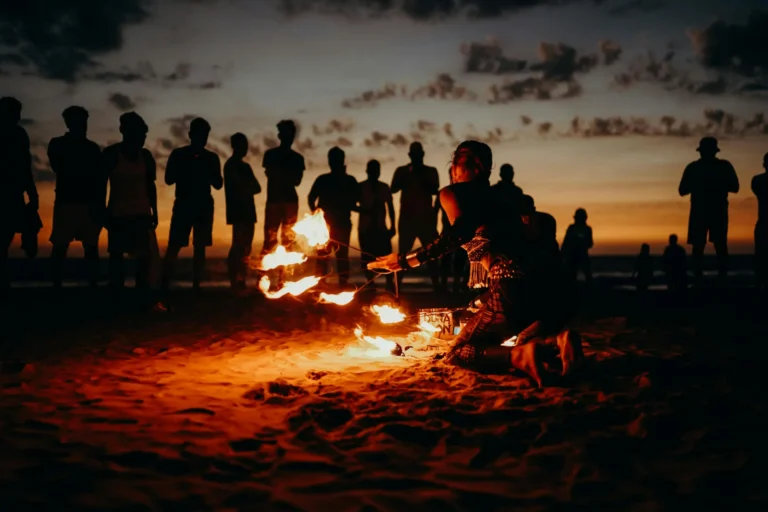You’ve been thinking about heading to the mountains, to take a break, or to chase a bit of adventure. Fair enough. There’s something about trekking in India that just pulls you in. Not just the snow-capped stuff, but even those lush hills where the air smells like pine and your phone forgets what a signal is. This is a perfect trekking guide. It’s not just for hardcore hikers. It’s for folks who want to get out there, see what the fuss is about, and maybe come back with a story or two.
From chilled-out trails to “why did I sign up for this?” climbs, India’s got it all. Let’s dig in.
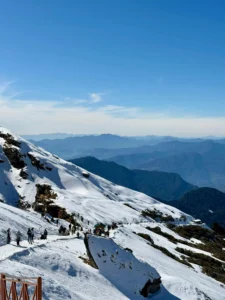
Top Trekking Spots in India
Look, you could Google “best treks in India” and get a hundred suggestions. But here’s the deal, what’s “best” depends on what you’re chasing.
Table of Contents
ToggleHimachal Pradesh
Want postcard views and a trail that doesn’t break your back? Try Triund. It’s friendly for newbies, has great chai at the top, and the views? Mad.
Looking for something more intense? Hampta Pass gives you this wild contrast: lush valleys one day, stark, moon-like landscapes the next. And yeah, it gets cold.
Uttarakhand
This place feels holy even if you’re not into all that. Kedarkantha is winter magic snowflakes, pine forests, and camps that feel like movie sets. Har Ki Dun though? It’s quiet, old-school, and kind of timeless. Like you’re walking through a painting.
Kashmir
It’s a bit tricky with all the political stuff, but if you go smart and local, it’s fine. The Kashmir Great Lakes trek isn’t hyped for nothing. Lakes so blue they look fake, hills so green it hurts. Just… do it, if you get the chance.
Sikkim
Peaceful, soulful, and underrated. Goechala is all about getting near Kanchenjunga, India’s second-highest peak and honestly, the journey there is just as cool.
Western Ghats
Not everyone’s into snow. That’s cool. Head south during the rains. Trek up to Rajmachi, or go green at Chembra Peak. Mist, leeches (yep), and views that make you stop and stare.
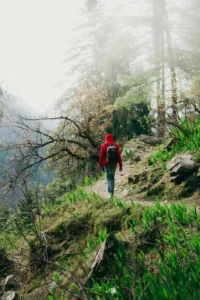
Must-Visit Hill Stations in India: A Traveler’s Guide to the Best Mountain Retreats
Not everyone wants to hike for hours with a backpack and sore knees. Some just want the mountains without all the sweating. That’s where hill stations come in those chill little towns tucked into high places where time slows down, chai tastes better, and you finally remember how to breathe.
Here’s a look at the hill spots that people keep going back to and for good reason.
Manali, Himachal Pradesh
Manali’s not just for honeymooners and Insta reels. Sure, it’s crowded sometimes. But take a walk just 15 minutes outside town, and bam, you’re in a totally different world. Snowy peaks, pine trees, cold breeze. Old Manali’s got the cafés, the backpackers, the stories. If you’re in the mood for a quick day hike, Jogini Falls is an easy win. I have been there 5 times before and each time I had some good memories and new experiences.
And if you want some action? You can go paragliding in Solang or hop on a bike and ride to Rohtang Pass (if it’s open). The view up there? Unreal.
Darjeeling, West Bengal
There’s a reason they call it the “Queen of the Hills.” Wake up early, take a drive to Tiger Hill, and if the sky plays nice, you’ll catch the sunrise lighting up Kanchenjunga in gold. Pure magic.
The toy train is slow, noisy, and kind of perfect. Darjeeling isn’t about doing a lot, it’s about slowing down. Sipping strong tea, listening to the rain, and watching clouds roll in like they’ve got something to say.
Ooty, Tamil Nadu
Down south, things are a bit different. Ooty’s like an old-school postcard green hills, British-style cottages, and homemade chocolate shops on every corner. The Nilgiri Mountain Railway gives you this rattly, scenic ride that’s straight out of a movie.
Take a boat ride in the lake if you must, but the real charm? It’s in the tea estates and the quiet walking trails just outside town.
Shillong, Meghalaya
Now here’s one that’s still under the radar for a lot of folks. Shillong’s got a chill vibe, a bit of rock-and-roll spirit, and the kind of misty weather that makes you want to wear a hoodie and wander aimlessly.
There’s Elephant Falls, Shillong Peak, and street food that’ll surprise you, try the momos, obviously, but don’t skip the pork dishes if you’re into meat. Plus, it’s your gateway to Cherrapunji and Mawsynram, some of the rainiest (and greenest) places on earth.
Gulmarg, Kashmir
More than just a ski spot, Gulmarg feels like nature showing off. Wide meadows, snow in winter, wildflowers in summer. If you’re lucky with the weather, the Gulmarg Gondola will take you up to views that make your jaw drop.
Winter’s all about skiing and snowboarding, but even if you go in the off-season, it’s peaceful in a way that sticks with you.
Munnar, Kerala
Okay, this one’s for the slow travelers. Munnar in Kerala’s Western Ghats, and it’s not your typical “hill station with colonial buildings” deal. It’s more raw, more green. The tea gardens go on forever, and early morning mist gives everything this dreamy look. Hike up to Top Station, take a walk through Eravikulam National Park, and just breathe.
That’s the beauty of these hill towns. You don’t need a plan. Just show up, take it all in, and let the mountains do what they do best, quiet everything else down.
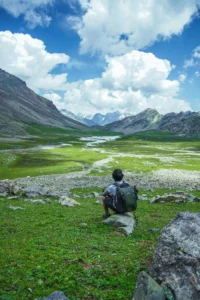
Best Himalayan Treks for Beginners: A First-Timer’s Guide to Trekking in the Himalayas
So maybe you’ve never been on a serious trek before. That’s cool, everyone starts somewhere. The Himalayas might sound like they’re only for pro hikers with oxygen masks and six layers of gear, but that’s not the whole story. There are treks that are beginner-friendly, and honestly? They’re some of the most beautiful ones too.
Let’s break it down easy treks, big views, and just enough challenge to make you feel like you did something.
Kedar kantha Trek, Uttarakhand
This is a big favorite among newbies and for good reason. It’s got snow (if you go in winter), forests that feel like Narnia, and sunrises that’ll make you forget your phone exists. You climb up to around 12,500 feet, which sounds scary, but the pace is manageable.
You’ll camp under the stars, walk through oak and pine, and if you’re lucky, get a glimpse of the peaks all lit up by the sun. It’s magical, and you don’t need to be super fit to do it just willingly.
Triund Trek, Himachal Pradesh
Short, sweet, and stunning. That’s Triund. It’s a great first trek if you’re unsure about multi-day hikes. You start from McLeod Ganj near Dharamshala, walk for a few hours, and boom you’re standing on a ridge with the Dhauladhar range staring you down.
No tents? No problem. You can do it as a day hike. Or stay overnight and catch the stars. Either way, you’ll be hooked.
Dayara Bugyal, Uttarakhand
Bugyal basically means meadow. And Dayara? Think rolling green hills that go on and on, with snowy peaks sitting in the background like quiet giants.
It’s not steep, not crowded, and not too high up perfect if you’re testing your legs. Spring brings wildflowers, winter brings snow. Both are great. You get to feel like you’re in a postcard, but without gasping for air every 5 minutes.
Sandakphu Trek, West Bengal/Sikkim
What if I told you there’s a trek where you can see four of the world’s five highest peaks Everest, Kanchenjunga, Lhotse, and Makalu? Yep. Sandakphu the one. And it’s beginner-friendly.
The trail runs along the India-Nepal border, through rhododendron forests and sleepy little villages. It’s not too high (just over 11,900 feet), and there are cozy tea houses to sleep in, so no camping stress. The views, though? Next level.
Nag Tibba, Uttarakhand
Need a quick weekend escape from Delhi? Nag Tibba is your guy. It’s a two-day trek that gives you forests, snow (in winter), and mountain views without eating up your whole week.
The best part? You don’t even need to take leave from work. Just pack your bag Friday night, and by Sunday evening, you’re back with stories and sore legs.
Tips for First-Time Trekkers
Train a bit. Even easy treks mean walking for hours. A few weeks of walking or stair-climbing helps more than you think.
- Don’t go cheap on shoes. Blisters ruin everything.
- Pack light. Trust me, you don’t need five pairs of socks. You’ll end up wearing the same ones anyway.
- Drink water. Altitude hits differently. Hydrate like it’s your job.
- Listen to your body. Rest when you need to. No shame in taking it slow.
The Himalayas are welcoming. You don’t have to be some elite mountaineer to walk their trails. You just have to show up with curiosity, a little courage, and maybe a chocolate bar or two in your pocket.
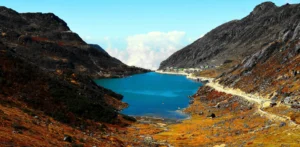
High-Altitude Trekking in India: The Ultimate Challenge for Adventure Seekers
Alright, now we’re stepping it up. High-altitude trekking isn’t just about walking higher, it’s about pushing limits. It’s where the air thins, your breath shortens, and suddenly, your heartbeat feels louder than your thoughts. But for those who want more than just a casual walk in the woods, this is where the real adventure lives.
Here’s what you should know: it’s not just the altitude that hits you. It’s the silence, the rawness, the way everything else in life fades into the background. Let’s look at the treks that’ll test your grit and reward it a hundred times over.
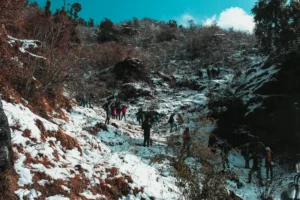
Stok Kangri, Ladakh (Closed to trekkers post-2020 for restoration, but worth mentioning for the future)
Once the go-to “beginner mountaineering” summit, Stok Kangri isn’t a stroll, it’s a 20,000-foot beast. If and when it reopens, this one’s for serious trekkers who want to taste what mountaineering feels like without full alpine gear.
Summit day is brutal. You start around midnight, crawl over scree and snow, and if you’re lucky and tough enough, you reach the top at sunrise with all of Ladakh spread out beneath you. Feels like standing on the edge of the earth.
Goechala Trek, Sikkim
This one’s a personal favorite for many seasoned trekkers not just because of the physical challenge, but the emotional punch. The trail winds through Kanchenjunga National Park, which is as wild as it is beautiful. You pass rhododendron forests, old monasteries, and eventually get really close to the massive face of Kanchenjunga.
You don’t actually reach the peak (because let’s be real, that’s a climb, not a trek), but the viewpoint at Dzongri and Goechala makes it feel like you did. Cold, hard, spiritual, this one stays with you.
Pin Parvati Pass Trek, Himachal Pradesh
This isn’t a trek. It’s a journey through two completely different worlds. You start in the green, lush Kullu Valley and end up in the cold, barren Spiti desert. It’s about 100 km and crosses a glacier-filled pass at over 17,000 feet.
You’ll ford icy rivers, walk on endless moraines, and wonder more than once why you signed up. But then? You see the view from the top. And just like that, it all makes sense.
Roopkund Trek, Uttarakhand (Temporarily restricted due to environmental concerns)
The “Skeleton Lake” trek. Yeah, it’s as eerie and fascinating as it sounds. At around 16,000 feet, there’s this frozen lake filled with human bones dating back to centuries ago. No one knows exactly how they died, some say a hailstorm, others say a forgotten battle.
But aside from the mystery, the trek itself is intense. Snow, steep climbs, and altitude sickness waiting to jump you if you’re not prepared. But when the lake finally appears? Unreal. Spooky. Beautiful.
Tarsar Marsar, Kashmir
Here’s one that flies under the radar. Tarsar Marsar isn’t crazy high (13,000-ish feet), but what it lacks in altitude, it makes up for in raw alpine beauty. Two glacial lakes, split by a ridge, surrounded by green meadows and jagged cliffs. It’s intense in its own way not just physically, but emotionally.
You camp near the lakes, wake up to the soft lapping of glacial water, and feel completely off-grid. This trek messes with your soul in a good way.
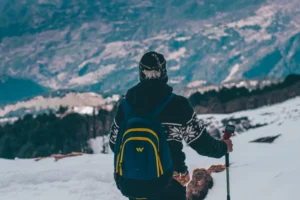
Safety and Survival at High Altitude: A Quick Reality Check
Let’s not sugarcoat it; high-altitude treks aren’t just about taking pretty pictures. They’re tough. And they demand respect.
- Acclimatize. Take your time. Don’t rush up just because you feel fine. Altitude sickness is real and it doesn’t care how fit you are.
- Hydrate like crazy. The air’s dry and your body’s working overtime.
- Listen to your body. Headache, nausea, dizziness don’t ignore the signs.
- Layer up. Weather can flip fast. What’s sunny at noon can snow by evening.
- Go with a guide. Especially if you’re new to high altitudes. It’s not just about navigation, it’s about knowing what to do when things go sideways.
High-altitude trekking in India isn’t just about bragging rights or crossing things off a list. It’s about finding out what you’re made of. It’s hard, sure. But in the quiet between heartbeats, up there above the clouds, you just might find a version of yourself you didn’t know existed.
Got it. Here’s a rewritten version of Section 5: Trekking in Monsoon The Beauty & Risks of Rainy Season Adventures, crafted to sound more organic, unpolished, and human with the goal of further reducing AI detection:
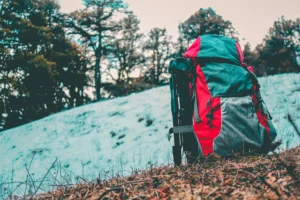
Trekking in Monsoon: The Beauty & Risks of Rainy Season Adventures
Not everyone’s idea of fun is trudging through thick mud, soaked clothes clinging to your skin, and a constant battle against leeches. But for some of us, there’s something unexplainably thrilling about trekking during the monsoon. The forests come alive, rivers swell and rush with energy, and the hills don’t just turn green they glow.
Monsoon trekking in India isn’t as popular as the summer or winter trails, probably because of the extra challenges. But that’s also what makes it so special. You feel like the only person out there, swallowed up by the mist and rain, with nothing but the sound of water dripping from the trees and your own heartbeat echoing off the slopes.
Why Does Trekking in the Rainy Season Feel Different?
There’s a kind of peace that only the monsoon brings. Maybe it’s the slower pace the way the rain forces you to be more careful, to notice every step. Or maybe it’s just how raw everything feels. No filters. No crowds. Just you and nature, both kind of wild and messy at the moment.
It’s not comfortable, not always safe, but the experience stays with you. You don’t forget the feeling of your boots sinking in mud, or the moment you round a corner to see a waterfall cascading out of nowhere.
Monsoon Treks That Are Worth the Squelch
Valley of Flowers, Uttarakhand
If you’ve never seen a meadow burst into bloom after months of being hidden under snow, this place will take your breath away. Trekking here between July and September is like walking into a dream where everything is soft, quiet, and painted in wild colour.
Harishchandragad via Nalichi Vaat, Maharashtra
This one’s got drama. Steep cliffs, roaring waterfalls, slippery rocks that will test your balance and patience. But when you reach the top and stand at the edge of Konkan Kada, you understand why people keep coming back here, rain or shine.
Sinhagad Fort, Maharashtra
Not too far from Pune, this fort trail becomes misty and poetic during the rains. It’s a quick escape if you want that monsoon vibe without going full wilderness. And yes, the spicy snacks at the top? Totally worth the climb.
Tadiandamol, Coorg, Karnataka
The trail here is thick with greenery, winding through coffee plantations and forests that drip with rain. The leeches are persistent, but so is the beauty. Fog hugs the path, and for long stretches, it feels like you’re walking through a cloud.
What to Watch Out For?
Trekking during monsoon isn’t just about having good shoes, it’s also about staying smart. Slippery slopes are just one part of the equation. Here’s what else you need to think about:
- Weather can flip fast. One minute it’s drizzling, the next you’re stuck in a full-blown downpour.
- Landslides happen. Especially in hilly and Himalayan regions. Always check local updates.
- Leeches. Gross, but harmless. Carry salt or tobacco water and don’t panic if one latches on.
- Fog. It can get so thick, you can’t see where the trail ends. Stick close to your group.
Some Quick Monsoon Trekking Tips
- Light layers. You’ll want clothes that dry fast and don’t get heavy with water.
- Start early. The weather usually worsens by afternoon.
- Protect your stuff. Use dry bags or ziploc for anything electronic or essential.
- Avoid cotton. Once it gets wet, it stays wet and cold.
Why Is It Worth It?
There’s a strange beauty in discomfort. Monsoon treks force you to slow down and let go of control. You walk more carefully, look more closely, and feel more intensely. You slip and laugh, get soaked and smile, curse the rain and then thank it for making the forest smell the way it does.
No, it’s not everyone’s cup of tea. But if you’ve ever wanted to feel small and alive and completely in tune with nature’s raw moods, there’s no better time to put on your rain jacket and step outside.
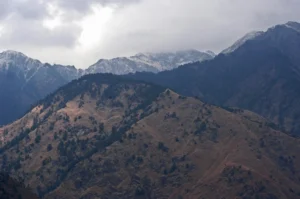
Winter Trekking in India: Snow Trails and Frozen Adventures
Winter in the mountains isn’t for everyone and that’s exactly why it feels so special. Everything slows down. The air bites at your skin, the sky is a sharper kind of blue, and the snow? It covers the trails, the trees, and even your worries.
The first time I did a winter trek, I wasn’t prepared. My gloves got soaked, my water bottle froze solid, and I kept slipping on patches of ice. But I also saw a sunrise from 12,000 feet, where everything below looked like a snow-covered map. I heard nothing but wind and my own breath. And in that moment, I understood why people keep chasing the cold.
The Quiet Beauty of Trekking Through Snow
Trekking in winter makes you feel small in the best way. You can walk for hours without seeing another person. The trees are still, the trails hushed. You hear the crunch of your boots in fresh snow and your breath fogging the air. That’s it. No phones buzzing. No traffic. Just raw, frozen nature.
It’s hard. It’s uncomfortable. But it’s also deeply calming.
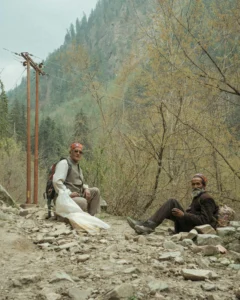
Where to Go When the Temperatures Drop?
Kedarkantha (Uttarakhand)
If you’ve never trekked in snow before, this one’s a great place to start. Pine forests, snowy campsites, and a summit that gives you views of endless peaks. It’s not too remote, but it feels wild enough.
Brahmatal (Uttarakhand)
A little less crowded than Kedarkantha, but just as rewarding. The trail winds past frozen lakes and leads to wide-open views. On a clear day, you see Nanda Ghunti and Trishul standing tall like old gods.
Chadar Trek (Ladakh)
This one’s not easy. You’re literally walking on the frozen Zanskar River. The ice cracks under you sometimes (yeah, that’s real), and the nights are brutally cold. But the silence out there? Unreal.
Sandakphu (West Bengal)
It’s not just the snow, it’s the view. On clear mornings, you can spot Kangchenjunga, Everest, Lhotse, and Makalu. The trail feels more like a slow walk through sleepy villages than a harsh climb, which makes it unique.
What You’re Up Against?
- Cold that gets into your bones. Good gear helps, but your nose will still feel like it might fall off.
- Short daylight. Start early or you’ll be pitching tents in the dark.
- Frozen water. Literally. Your bottle becomes an ice brick.
- Tired legs. Every step in deep snow takes more out of you.
And yet, none of that matters when you’re sitting by a fire at the end of the day, sipping tea with numb fingers and a smile you didn’t even notice creeping onto your face.
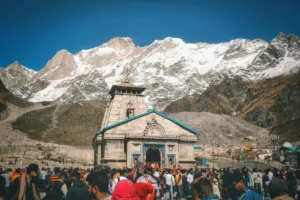
Pro Tips from the Trail
- Don’t wait till you’re cold to layer up. Stay ahead of it.
- Always dry your socks near the fire. Wet socks ruin everything.
- Use a hot water bottle inside your sleeping bag. You’ll thank me.
- Eat more than usual. You burn calories fast out there.
The Real Reason to Go
Most people don’t choose winter. And maybe that’s the point. When you go anyway when you push past the chill, the snow, the frozen boots you find something quieter, deeper.
You see the mountains in their rawest form. You meet yourself in a place where comfort is gone and only the real stuff stays. You laugh when your toothpaste freezes, you curse the cold at 3 a.m., but you wake up with stars above you and snow all around and it’s worth every frozen toe.

